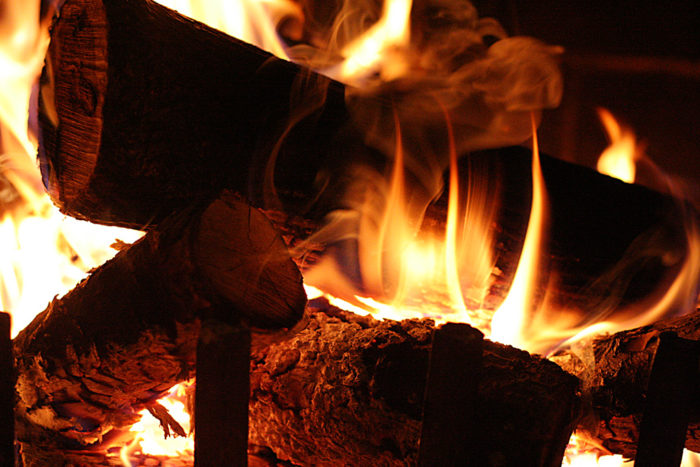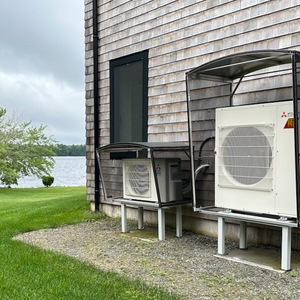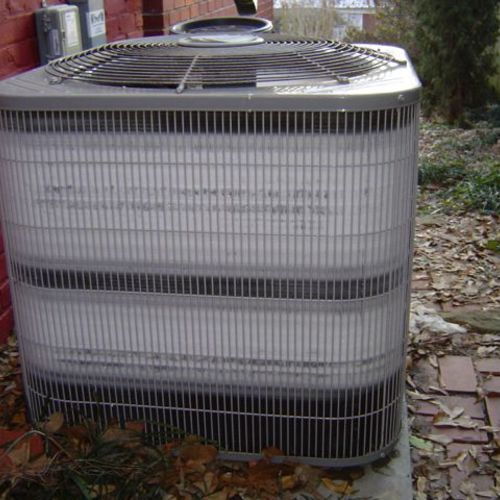
Image Credit: Steve Paluch - Flickr.com / Creative Commons license
While you slept last night, Santa Claus was putting his knowledge of physics to work. No, not with that silly anti-gravity stuff. Everyone knows the whole reindeer thing is just a cover for the way he really gets to all those houses in just one night. He uses one of the original Time Turners. In fact, Professor McGonagall got her first Time Turner from Santa himself.
No, the physics of Santa’s job is dealing with all those fireplaces and the fires that he encounters in so many of them. It’s understanding heat that saves his hide — and all those presents!
Back in grad school, I was taking a class in surface physics, and my friend Steve asked, “What is temperature?” On first hearing that question, you might think it’s so obvious that it doesn’t even bear asking, and anyone who does give voice to it must be an idiot. But have you really thought about it?
Perhaps the most important lesson I learned in my seven years of grad school was to ask questions, even about things that seem so basic as not to need questioning. There a lot of insights and deeper understanding available when you start questioning your basic beliefs.
Temperature, thermal energy, and heat
So, let’s look at a question related to Steve’s: What is heat? All of us who work or play in the world of building science talk about it, so it’s a good idea to know a little about this basic concept.
Actually, the two questions are related. Heat and temperature go together, but they’re not the same thing. Before we can understand heat and temperature, though, we’ve got to talk about thermal energy. It sounds like thermal energy and heat might be the same thing, too, but they’re not.
Thermal energy is the combined energy of all the jiggling going on in the molecules of an object.
Temperature is a measure of the average kinetic energy (energy of motion) of the molecules.
Heat is a measure of how much thermal energy transfers from one object to another because of a temperature difference.
Of the three quantities, temperature is the one we have direct access to. It’s the one we learn about at an early age, when we touch something hot and get burned. It’s also the key to understanding heat because heat flows only when there’s a temperature difference. You don’t learn any life lessons by touching something that’s the same temperature as you because no temperature difference means no heat flow.
The term “heat” should be thought of only in conjunction with “flow” or “transfer” because it’s what happens when there’s a temperature difference, and one body (at a higher temperature) transfers thermal energy to another (at a lower temperature). We don’t really care about thermal energy in building science because heat flow is what matters.
Calculating heat flow
We can easily calculate the amount of heat that we lose through the building enclosure (walls, floors, and ceilings that separate conditioned from unconditioned space) by conduction on a cold night. The equation is Q = U x A x ΔT.
Q is the amount of heat flow (in BTU per hour), U is the conductance, A is the area, and ΔT is the temperature difference. (For more on the details of this equation, see my articles U R A ΔT, and Other Building Science Blandishments and Flat or Lumpy.)
Now, where this really comes in handy is when you want to do some energy modeling or heating and cooling load calculations for the purpose of sizing the heating and cooling equipment. You use that formula for all parts of the building enclosure, add in your other loads (ducts, people, appliances…), and you can find out how much energy a home uses or needs for heating and cooling. It’s all about heat flow, which is all about temperature difference, which is all about thermal energy.
Let me emphasize one point here before I end: Heat flows only when there’s a temperature difference, and it naturally flows from a warmer body to a cooler body. You can pump it the other way, and that’s exactly what refrigerators, air conditioners, and heat pumps do. But the Second Law of Thermodynamics says heat wants to flow from warmer to cooler bodies.
That law is one of the most important and interesting in all of physics, and we could spend many hours engrossed in a discussion of the Second Law topics of entropy and the arrow of time, the heat death of the universe, why some processes are irreversible, and how it’s possible, according to statistical mechanics, for all the air in the room to be suddenly in one little corner, leaving you gasping in your chair as you read this blog. Of course, we’d need plenty of adult beverages on hand. Even better would be to have that discussion at the end of a long day of skiing.
And speaking of skiing, Santa has put his Time Turner back in its box and is now heading out to the slopes himself. That’s how he keeps in shape during the off-season, you know.
Allison Bailes of Decatur, Georgia, is a speaker, writer, energy consultant, RESNET-certified trainer, and the author of the Energy Vanguard Blog. You can follow him on Twitter at @EnergyVanguard.
Weekly Newsletter
Get building science and energy efficiency advice, plus special offers, in your inbox.















6 Comments
I'm not sure...
I appreciate your articles, and your efforts to explain building science concepts to us. I'm not convinced that your new definition of heat, which contrasts with all the textbooks and references that I have seen, is really moving comprehension forward.
Response to Derek Roff
What, specifically, is the contrast between Allison's admittedly compact definition and those of the textbooks you refer to?
Question
Allison,
I too am a bit confused by this definition. You say that heat is a measure of how much thermal energy transfers from one object to another because of a temperature difference.
Then you emphasize that heat flows only when there's a temperature difference, and it naturally flows from a warmer body to a cooler body.
When you say that “heat flows only when there's a temperature difference,” it follows that heat does not flow if there is no temperature difference. The distinction of heat that is not flowing shows that heat can exist without flowing. Yet how can heat exist without flowing if flowing is what defines heat?
variations on heat
Responding to Bruce, the term "heat" shows up in lots of fairly basic equations, many of which are relevant to building design at one point or another. For example, the BTU is only a meaningful measurement unit, because we have a definition for the [specific] heat of water. The definition of BTU is incompatible with Allison's definition here. So are the classical laws of thermodynamics.
I can understand what Allison means in his new definition, and I can guess why he chose it. He wants to communicate to readers a more active and functional experience of how heat moves in a house. But I think equating heat and heat flow adds confusion, rather than reducing it. Will it not be confusing to readers, to suggest that adding insulation to a house will reduce its heat? That a really well-insulated electric water heater, that is up to temperature and idling, has virtually no heat?
According to quantum theory, we can't determine whether Schroedinger's beer is cold or not, until we open the cooler. I don't think we need similar confusion when discussing building science concepts.
It's basic physics, not a new definition
What I've stated above is just basic physics that you can find in just about any introductory physics book. I haven't redefined anything. Heat flow is analogous to work. It's a transfer of energy, just as work is.
And speaking of work, there is an exception to what I said above about heat flowing only when there's a temperature difference. When work is done on or by a system or when there's a phase change, you can have heat flow without a temperature difference. Building enclosures, however, usually don't do work or have work done on them, and few have phase change materials to simulate the effect of thermal mass.
And about the BTU...
Derek wrote:
Actually, you're putting the cart before the horse here. Heat capacity comes from the definition of the BTU, not the other way around. It's the proportionality constant that determines the amount of temperature change you get for a given heat flow in a material.
Log in or create an account to post a comment.
Sign up Log in